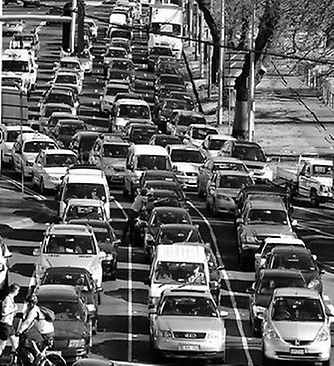WFH hoped to ease traffic woes
 Infrastructure Victoria says more flexible working terms could ease public transport issues.
Infrastructure Victoria says more flexible working terms could ease public transport issues.
A new report from Infrastructure Victoria suggests using the state public service as an example of best practice when it comes to embracing flexible work.
About 1 in 25 employees in Melbournne’s CBD are Victorian public servants, and could be the key to reducing congestion as the state returns to a ‘COVID normal’.
The report, ‘Transporting Melbourne’s Recovery: Immediate policy actions to get Melbourne moving’,suggests adopting staggered start times and rotating office days for government employees.
The analysts say this may ‘nudge’ other workplaces to do the same.
The research says there are “competing objectives” in the transport network that the state government needs to find a way to balance. These include transmission risks, congestion, and ways to stimulate economic activity.
“Governments across the world are working rapidly to understand how to cater for the shifting transport demands of their cities — specifically, a disruption to entire transport systems that were not designed with such health and biosecurity challenges in mind,” the report says.
The research says that some short-term policy solutions would allow for a return to higher levels of economic activity, while limiting road congestion.
Infrastructure Victoria’s modelling finds that greater active transport use (such as cycling and walking) and more flexible work, would make a “significant contribution” to reducing road congestion and public transport crowding.
“Our modelling has shown that greater levels of flexible work, consisting of levels of working from home of around 25 per cent and more flexible work times, result in congestion levels in Inner Metro close to pre-COVID-19 levels (a reduction of over 100,000 delay hours compared to COVID Normal), and much lower congestion across the rest of Melbourne,” the report says.
“Our modelling also shows that an increase of over 142,000 cycling trips each day to, from, and within Inner Metro, when combined with greater walking trips, results in a reduction of 40,000 delay hours for Inner Metro road congestion.”
The full report is accessible in PDF form, here.








 Print
Print